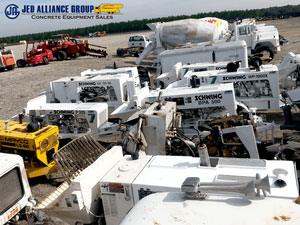There are many types of concrete pump. After all, they are the most efficient way to place concrete for a construction project. These ingenious machines make it possible to raise the cement material to heights that fuel the imagination of skyscraper engineers and developers. High-pressure pumps with booms and long lines enable pouring of concrete beyond most people’s comfort zone, and allow this valuable material ease of access to hard-to-reach areas.
Concrete Pumps Make Modern Construction Possible
Any other method of transporting and placing concrete creates adverse and unsafe conditions. It also increases the need for a large amount of manual labor, and therefore the costs.
Engineering today assumes mechanized pouring of concrete that fits within the project’s cost budget. Many of our buildings and other construction projects would not be economically feasible without modern concrete pumping equipment. Concrete pumping not only shortens the work and saves overhead costs, but also reduces the use of personnel in the discharge of material.
It is clear that the concrete pump is the best way to pour concrete. But when it comes to knowing which type of concrete pump you need for a specific job, it is necessary to understand what each type of unit does. If you match the machine to the job and the cement mix used, you can ensure efficiency and align the costs of purchase or rent of a pump with the project budget.

Types of Concrete Pumps
Concrete is difficult to work with as a construction material. This is why the concrete placement industry has different concrete pump types for different applications.
Stationary Concrete Pumps
Stationary concrete pumps have 3 types of pumping systems that vary according to the brand and specifications of each machine. The most commonly found are:
- Concrete Pump with “Rock Valve”. Generally used for working with a large stone or aggregate. The system consists of a valve shifting from cylinder to cylinder which pumps concrete through one outlet. Use of rotation through a kidney seal allows concrete output through a single opening.
- Concrete Pump System with Balls. These units are composed of two chambers separated by steel balls where concrete cylinders absorb pumped material then let it pass under pressure through the outlet.
- Concrete Pump with “S VALVE”. Characterized for high-pressure pumping, concrete passes through a single valve through on these machines.
Boom Pumps and Concrete Pump Trucks
The most commonly used machines on large projects are Boom Pumps, especially where you need to place concrete in hard-to-reach locations. You can find these units in various types and sizes in meters according to the needs of each construction job. The most common are:
- Concrete Boom Trucks: Comprised of a large truck with a pump mounted on board, this pump has a powerful pump kit for maximum efficiency and speed of work.
- Line pump: You can move this portable pump throughout the work. It is most common for pumping grout, mortar, sludge and other construction materials.
- Stationary Pump: Mostly used for placing concrete in areas that are difficult or impossible to reach with a boom truck. These are large pumps mounted on a strong frame and are used to pour large amounts of concrete over long distances.
The requirements and the type of work being performed will determine your choice of which concrete pump you use for a particular project. What are the characteristics of the material being pumped, the layout of the construction site, and the distance to be pumped?
To choose the concrete pump you need to consider:
- Concrete mix design
- Size of aggregate or stone
- Volume of concrete you want to pump
- Horizontal and vertical distances
All this is very important when choosing the right type of concrete pump, to ensure your job goes smoothly.
